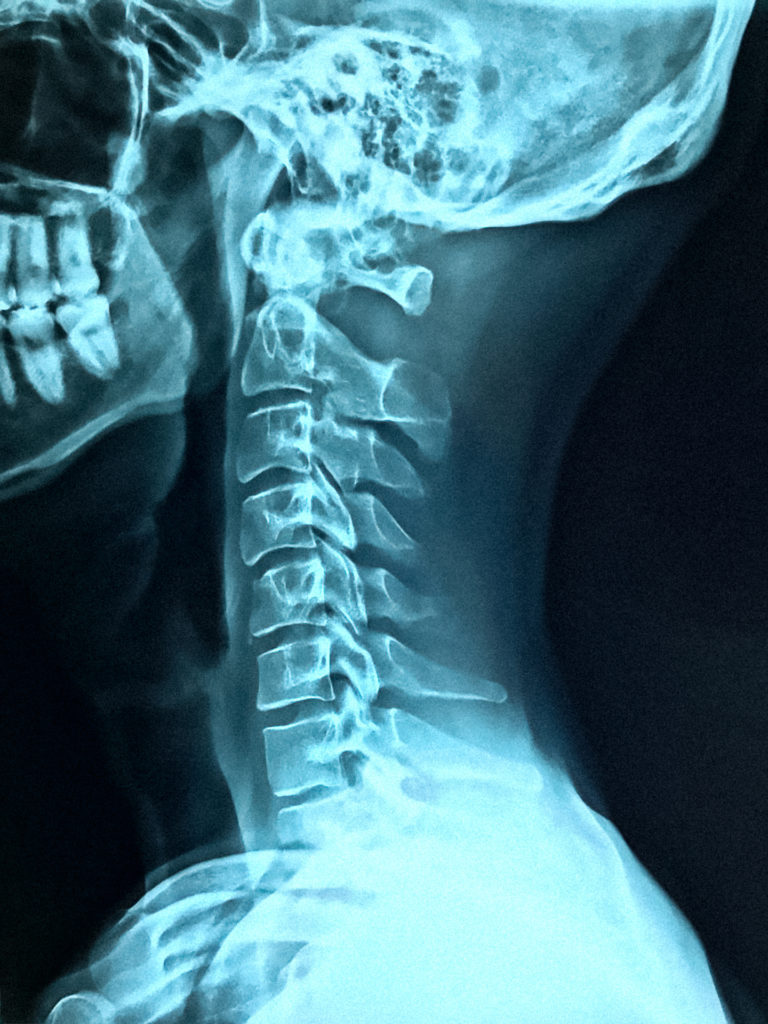What causes neck pain?
Common causes of neck pain include:
degradation of joint surfaces (facet joint/other osteoarthritis)
squeezing of the disc out between the vertebra (disc herniation)
slipping of the vertebra forward or backward (anterolisthesis or retrolisthesis)
inflammation, misalignment, or other ligament disruption at the location where the sacrum meets the pelvis (SI joint pain)
pinching of the main spinal cord within the spine (myelopathy)
pinching of the nerve roots as they exit the spine (radiculopathy)
pinching of the nerves as the travel through a region in the neck and shoulder called the thoracic outlet (thoracic outlet syndrome)
misalignment of the spine that puts too much stress on certain structures (scoliosis, facet dysfunction)
other medical condition (infection, cancer, cardiovascular disease, chronic stress, etc.)
The determination of what is causing neck pain is extremely important in successfully treating it.


How can a physical therapist help?
Physical therapists use the specific history of your neck pain, your other health conditions that may contribute, description and location of the pain, visual movement analysis, palpation and specialized tests to determine where your pain is coming from (joint, muscle, nerve, ligament, bone, disc).
Depending on what is going on with your particular case, we use the appropriate exercise regimen and specialized manual methods to address the root of your neck pain.
What does the research say?
1. Extensive current medical literature suggests moderate to strong evidence supporting the benefits of physical therapy’s role in reducing neck pain and improving range of motion. 1-5
2. One study demonstrated that training specific muscles in the neck can help decrease pain levels and reduce anxiety. 2
3. Another study showed that chronic neck pain can be effectively reduced with the corrected therapeutic exercises. 4
4. Yet another study demonstrated that neck pain can effectively be treated using specific methods in physical therapy.5


Quick facts
Every year, about 70% of the general population experiences neck pain. 1
Neck pain is the fourth leading cause of disability in the United States 3
SOURCES
1.Haldeman S, Carroll L, Cassidy JD, Schubert J, Nygren A. The Bone and Joint Decade 2000-2010 Task Force on Neck Pain and Its Associated Disorders: executive summary. Spine. 2008;33(4 Suppl):S5-7.
2.Nazari G, Bobos P, Billis E, Macdermid JC. Cervical flexor muscle training reduces pain, anxiety, and depression levels in patients with chronic neck pain by a clinically important amount: A prospective cohort study. Physiother Res Int. 2018.
3.Babatunde OO, Jordan JL, Van der windt DA, Hill JC, Foster NE, Protheroe J. Effective treatment options for musculoskeletal pain in primary care: A systematic overview of current evidence. PLoS ONE. 2017;12(6):e0178621.
4.Bertozzi L, Gardenghi I, Turoni F, et al. Effect of therapeutic exercise on pain and disability in the management of chronic nonspecific neck pain: systematic review and meta-analysis of randomized trials. Phys Ther. 2013; 93(8):1026-36.
5.Wang W, Olson S, Campbell A, Hanten W, Gleeson P. Effectiveness of physical therapy for patients with neck pain: an individualized approach using a clinical decision-making algorithm. Am J Phys Med Rehabil. 2003; 82(3):203-18.
